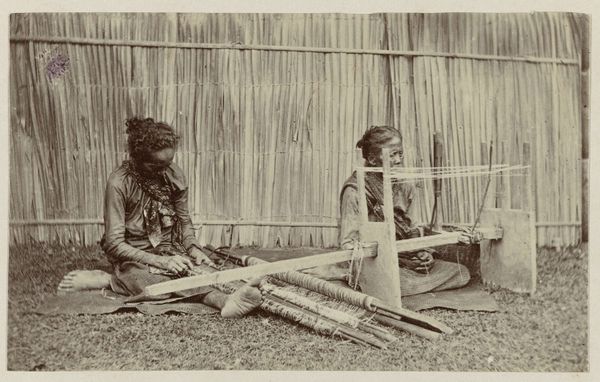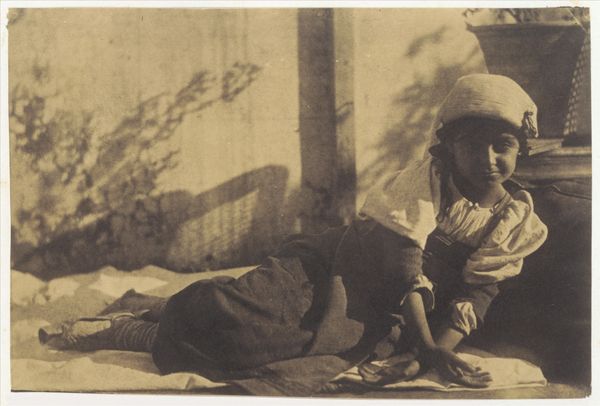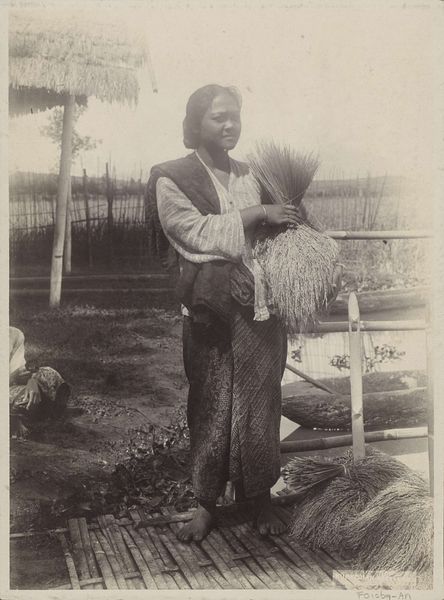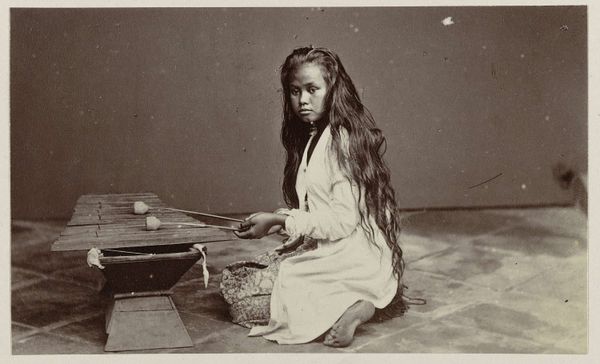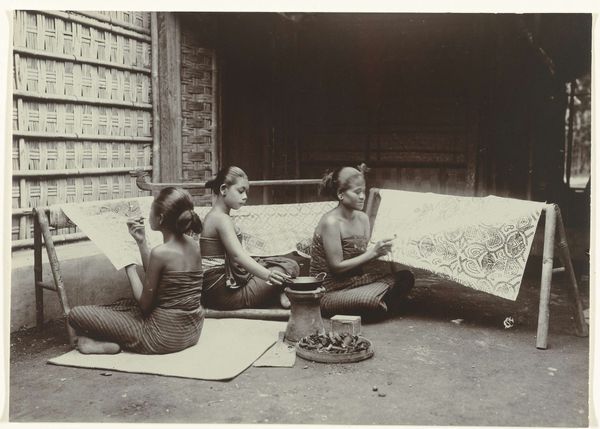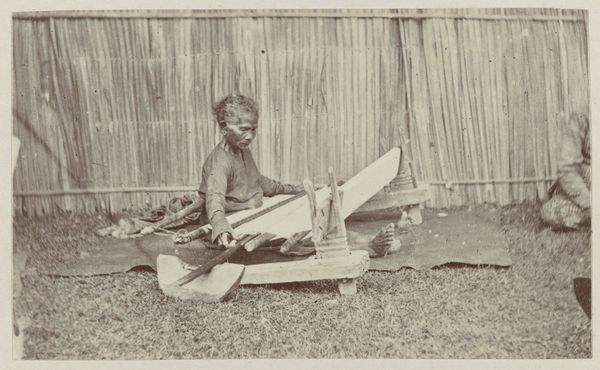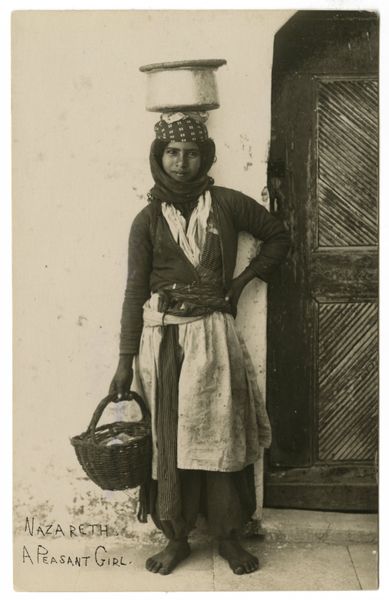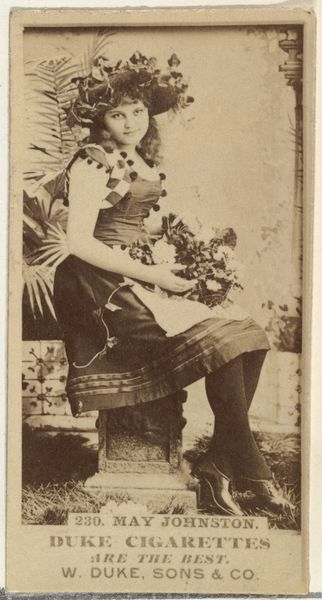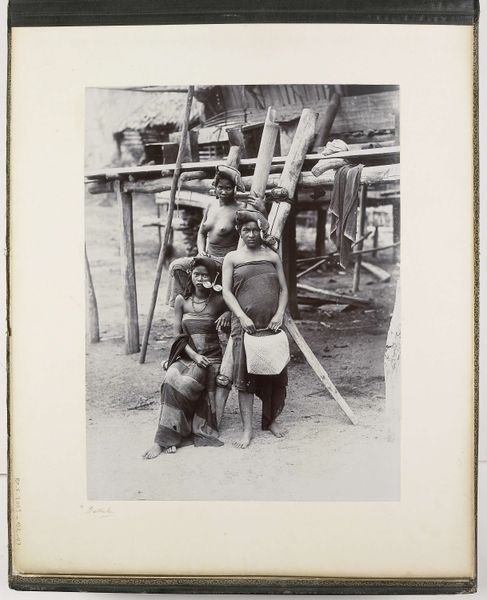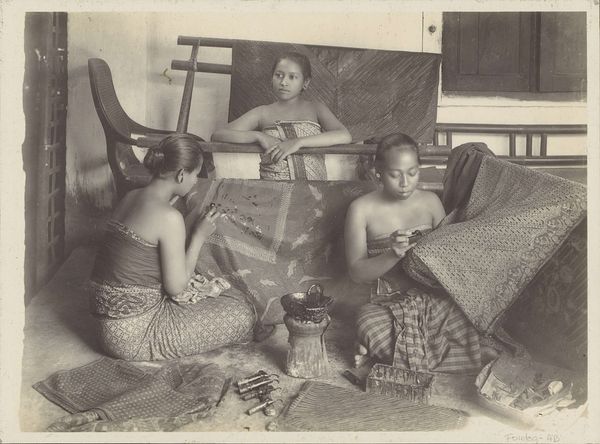
albumen-print, photography, albumen-print
#
albumen-print
#
portrait
#
asian-art
#
archive photography
#
photography
#
historical photography
#
19th century
#
albumen-print
Dimensions: height 56 mm, width 95 mm
Copyright: Rijks Museum: Open Domain
Curator: Let's consider this albumen print, "Vrouw aan het batikken," taken sometime between 1860 and 1890, by Woodbury & Page, now held at the Rijksmuseum. What are your first thoughts? Editor: It feels so intimate, even staged. The composition leads my eye to the meticulous detail of the batik work itself, highlighting the intricate, repeated patterns and the young woman’s focused posture. The sepia tones enhance this effect. Curator: The tonal range and clarity achieved in the albumen process lend a great deal of weight to the perceived realism. Consider how the geometry of the frame containing the textile mirrors the geometry of the shot itself. Editor: Right, this image invites questions about representation and agency. Whose perspective are we seeing? How was this image used at the time, and what did it signify to the Western gaze of the era, capturing the “exotic” East and its craft traditions? Curator: Indeed. This is an example of how genre painting manifested in photography; however, we cannot simply consider the artistic merit and ignore the power structures embedded in its creation and distribution. Consider also that albumen prints were very fragile. Editor: It highlights a dynamic: the sitter absorbed in meticulous craft, seemingly oblivious to the act of being observed and photographed. This interplay, so integral to archival photographs, demands attention. Curator: I agree. Also consider the contrast between the seemingly chaotic patterns on the fabric and the very controlled pose of the woman working on it. A beautiful and very complicated portrait. Editor: Precisely. These images, like batik itself, carry layers of meaning—patterned not just into cloth but inscribed onto history. Thank you for unpacking the complexities. Curator: And thank you for providing a deeper insight into its social contexts and historical interpretation. A rich discussion!
Comments
No comments
Be the first to comment and join the conversation on the ultimate creative platform.
